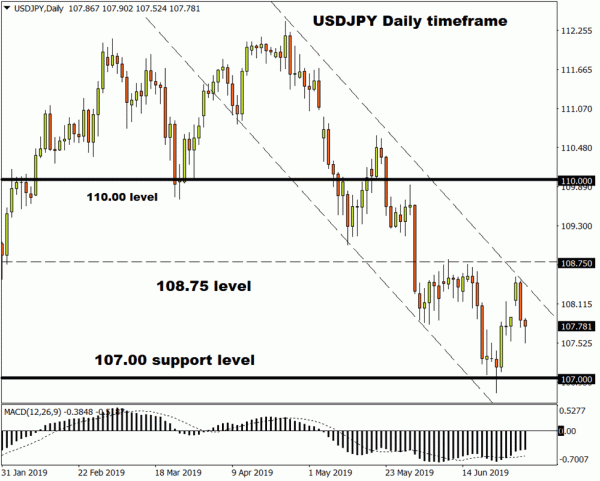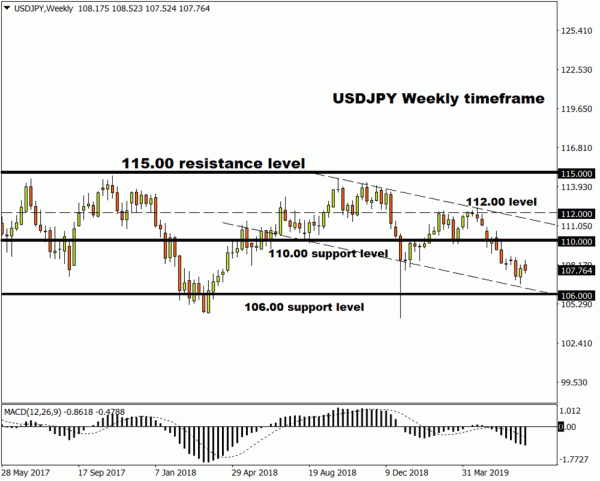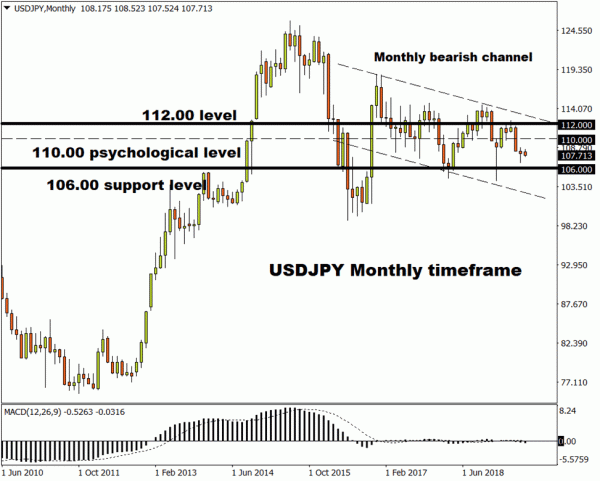The ingredients are in place for the USDJPY to cement its position as one of the liveliest FX pairs on the radars of investors heading into the second half of 2019.
There are multiple questions to consider when determining the fortunes of the Japanese currency and its US counterpart. Will the Federal Reserve cut US interest rates by up to 50 basis points in July? Is the Trump Administration steadily influencing the monetary policy stance of the Fed? Will President Trump fire/replace Fed Chair Jerome Powell? Will US-China relations follow a similar path of deterioration as H1 2019? Will the universal slowdown in economic data lead to another global downturn? Could the brewing war of words between the United States and Iran escalate into a conflict? And, what if Boris Johnson, upon winning the contest to become the next UK Prime Minister, sticks to his guns and leads the United Kingdom into a no-deal Brexit on October 31? Will such an outcome precipitate another plunge in Sterling and lead to a spectacular period of weakness for global markets?
Extended period of market uncertainty needed for USDJPY 100
Any one or a combination of the above would lead to a prolonged round of market panic and will send the USDJPY lower as safe haven demand for the Japanese Yen escalates. An extended period of market uncertainty would be needed for USDJPY to fall below 100 for the first time since Q2 2016. The January “flash crash” low of 104 is the current line in the sand in coming months, but 104 will not act as solid support for the pair, should the Yen further its 2.7% Q2 advance against the greenback.
Another turn for the worse in US-China trade sinks USDJPY
The United States and China trade saga has extended into the second half of 2019 and investors have rushed into stock markets once again on optimism that central banks will come to the rescue with yet another round of monetary easing.
Be careful of this narrative. A resolution to the US-China trade standoff would dampen expectations that the Fed will cut US interest rates and push investors to take profit from the stock rally that has carried US valuations back towards record highs. The Dow Jones and the S&P 500 jumped above 14% and 17.35% respectively in H1.
Another wrong turn in US-China relations will prompt the Federal Reserve to cut US interest rates again, as it becomes clearer that US-led protectionist policies are denting the world’s biggest economy. Economic weakness in the United States and the Fed bowing to investor expectations of lower US interest rates will squeeze the Dollar more than the 1.6% drop it suffered in the month of June.
USDJPY buyers need Fed to disappoint investors by holding back from lower US rates
What potential USDJPY buyers need to see is positive geopolitical news, the key one being the US-China trade war. If the two nations do finally agree to new trade terms, or at least a prolonged truce on new tariffs, a worldwide relief rally would shove both the Yen and Gold from their pedestals as beneficiaries of safe haven buying.
A global stock market surge on positive US-China newsflow can take the USDJPY back towards 110, but the Federal Reserve would need to delay its recent tone that it is approaching one, or several, possible US interest rate cuts in the next six months for the USDJPY to extend above 110 and back to its current 2019 high at 112.
















